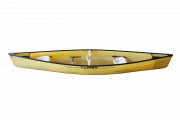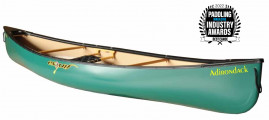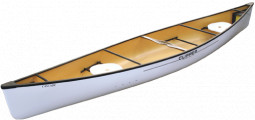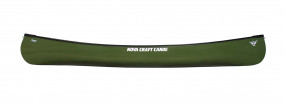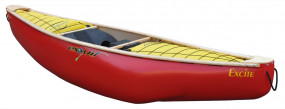Paddlers with many portages under their yokes will appreciate any means to shave a few pounds off the awkward overhead loads they carry. Being easier to carry and paddle, lightweight canoes extend tripping and travel possibilities. Even those who are looking strictly for a day-paddling canoe will appreciate the ease with which a lightweight canoe is loaded on and off a vehicle or storage rack.
Lightweight canoes are available in a range of sizes, shapes and prices. This guide will provide tips and suggestions to help steer you in the right direction for your next lightweight canoe purchase.
Top picks: Best lightweight canoes for 2024
The following lightweight canoes have received the highest star ratings by reviewers in our Paddling Buyer’s Guide. See and review all lightweight canoes here.
Best Lightweight Canoes
Shop lightweight canoes
The first step when buying any canoe is deciding on the type of canoe. Solo, tandem or larger; racing or recreation; inflatable or square-stern? Lightweight versions of many canoe types are available, so find the right shape and size when searching.
Our Paddling Buyer’s Guide has every canoe on the market along with reviews, specs and information on where to buy them. The links will take you to the specific lightweight canoe models of each category.
Note that when we refer generally to lightweight canoes, we are talking about canoes that are less than 50 pounds. This takes into consideration the average weight of all canoes. However, what counts as “lightweight” will change as we talk about specific types of canoes. The lightest aluminum canoes, for example, are still heavier than 50 pounds. Likewise, the lightest inflatable canoe will be lighter than 50 pounds.
Shop by type
Shop by weight
Shop by material
Shop by brand
Shopping for a used lightweight canoe?
Buying a used lightweight canoe requires diligence when searching, and thorough inspection upon seeing a candidate. With patience and a willingness to do some repairs, excellent deals can be scored on damaged lightweight canoes. Outfitters also typically rent out mid-range lightweight canoes, and they may be available at the end of the season.
Demand for used canoes has skyrocketed. As paddlesports surged in popularity over the last few years, used canoes were snapped up nearly as quickly as they hit the market. There is hope, however, especially when searching for a lightweight canoe. These are more specialized boats, and so re-sell at a fairly high price point, reducing the number of competing buyers.
Buying a used lightweight canoe is a great opportunity to maximize the value of your canoe-spending dollar, as you can buy a high-level canoe at a mid-range price. Expect to spend more than $2,000 for a used canoe in good condition.
Many outfitters carry a fleet of lightweight canoes which get rented out and sold at the end of the season. Contact the outfitters directly to inquire if they may be selling off their boats. Renting one for a paddle or a short trip is a great way to test the canoe. Be on the lookout for trade shows, symposiums and events. Often canoe dealers will bring demo boats to these events, which will be for sale at discounted prices.
There may be some great deals on canoes with punctures or holes in them – if you are willing to put some work into fixing it. While this is a great opportunity to learn how to do fiberglass work, be realistic about your abilities (and the time you can commit to the repair). Your local canoe shop may be able to provide guidance and order the materials needed.
For more tips on what to look for when selecting a used canoe, read our article How To Buy A Used Canoe.
Lightweight canoe buying guide
When buying a lightweight canoe, consider the type of paddling you are planning to do, and who you want to paddle with. Are you looking for a solo boat or one suitable for the whole family?
Consider the materials lightweight canoes are made from. Fiberglass and Kevlar composites can both be considered ‘lightweight’ materials. These materials range in weight, durability, and price. These three aspects play off against each other. As weight decreases, so does durability, while price increases.
For buyers, the trick is to find the right combination. Try to zero in on a material that is within your price range, is a comfortable weight to handle, and can withstand potential damage from your style of paddling. The best you can hope for is to settle on the perfect compromise.
Canoes made with fiberglass composite materials are on the heavier end of the lightweight spectrum, but they land at a more entry-level price. Fiberglass composite canoes are relatively durable and easy to fix. These canoes are ideal for flatwater tripping with some portaging.
Kevlar composite canoes are more expensive but much lighter. These canoes are especially loved by paddlers worried about being able to cartop their canoe or are intent on getting to lakes at the ends of long portage trails. They are ideal for flatwater tripping, but keep in mind they cannot withstand the same impacts as a fiberglass canoe.
Canoe design depends on the intended uses as well. Some lightweight canoes are designed to be paddled with gear in them. When empty, they may sit high in the water and get blown around by wind. Others are designed for day touring and perform best with minimal gear inside.
When you take the canoe for a test paddle—always a good idea—try it out both empty and with ballast to see how it performs.
-
What is a lightweight canoe?
A lightweight canoe is one designed for flatwater tripping or day touring and made with carbon, Kevlar, Innegra, or a company’s proprietary aramid blend. Lightweight canoes are more expensive than entry-level canoes, Canoes designed for whitewater or extended wilderness trips will be heavier and more robust. Entry-level recreational canoes will be heavier and made from aluminum or plastic.
-
What is the lightest canoe?
The lightest canoes will be ‘pack boats’; solo canoes with low seats originally designed for paddling and portaging through the lake country of the Adirondacks. These boats will weigh less than 20 pounds and can easily be carried. The lightest 16-foot tandem canoes weigh less than 40 pounds.
-
How much does a lightweight canoe weigh?
The longer the canoe, the greater the minimum weight. There is no set weight for a canoe to be considered ‘lightweight’, but expect that all canoes built with aramid, carbon, Kevlar, or a proprietary blend like Novacraft’s Blue Steel to be considered lightweight. Fifteen-foot versions of these boats will weigh less than 35 pounds.
Lightweight canoe reviews
Existing reviews are a valuable tool when searching for the best lightweight canoe. Use them to better understand the strengths of specific canoes and find ones that match the style of paddling you intend to do. Don’t forget to view the prices to compare with your budget.
- Review: Rheaume Canoes’ Explorer 16
- New Nova Craft Canoe Prospector 14 Walk-Through (Video)
- First Look: Esquif Huron 17 (Video)
- Canoe Review: Stellar Kayaks Dragonfly
- Boat Review: Wenonah Minnesota II
- Wenonah Canoe Review: Wee Lassie Solo Canoe
- Boat Review: Clipper Canoes Jensen 18
- Canoe Review: Echo Echoee
- Northwind Solo by Northstar Canoes: Solo Canoe Review
- Solo Canoe Review: Mad River Serenade



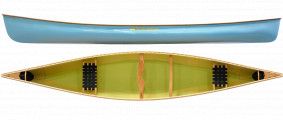
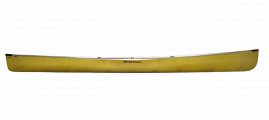
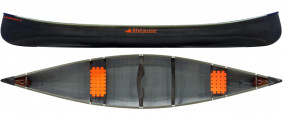
-first_product_boats.jpg)

